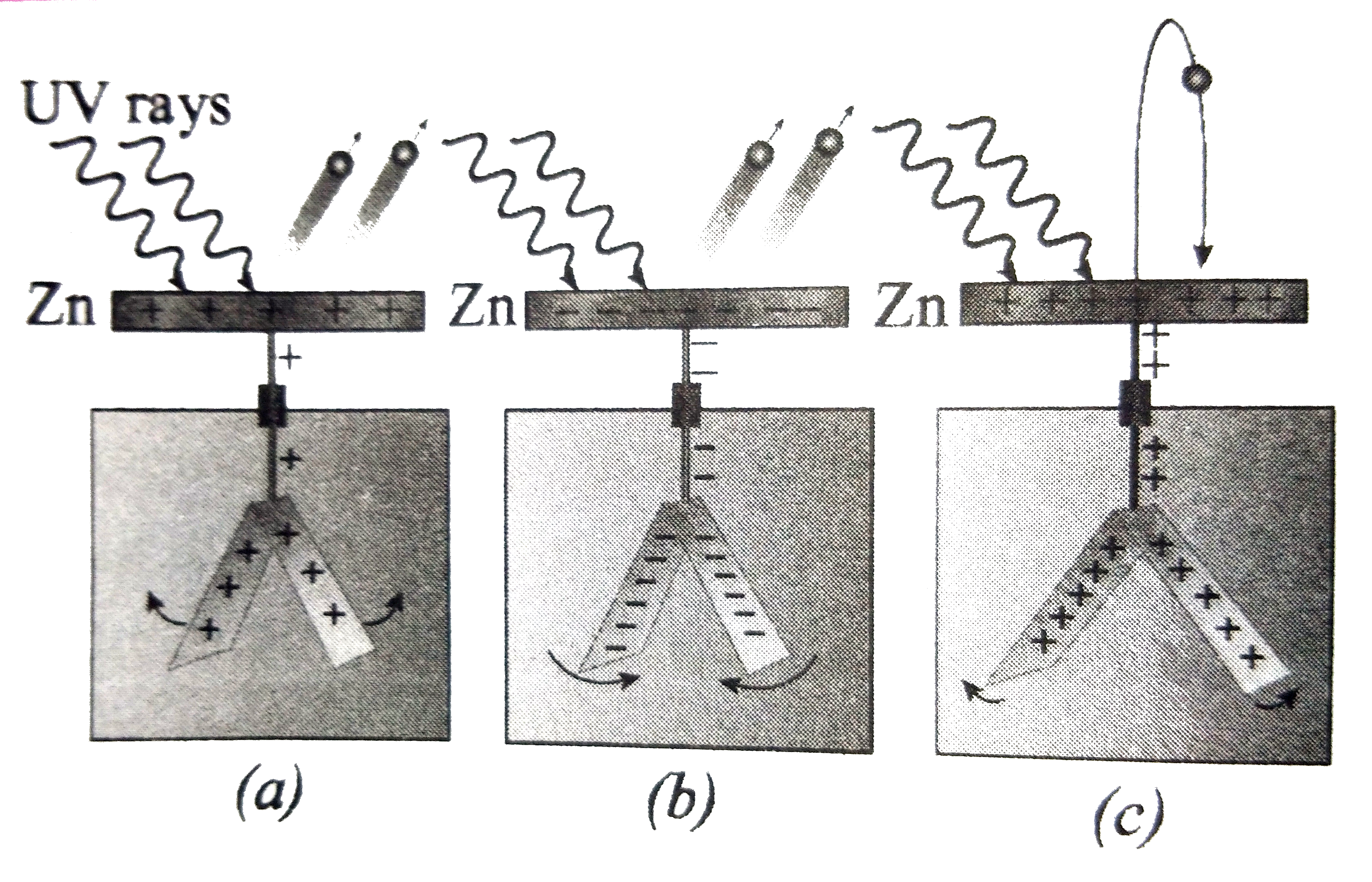Briefly discuss the observations of Hertz, Hallwachs and lenard.
Text Solution
Maxwell.s theory of electromagnetism predicted the existence of electromagnetic waves and concluded that light itself is just an electromagnetic waves.
Hertz observations :
In 1887, Heinrich Hertz first became successful in generating and detecting electromagnetic waves with his high voltage induction coil to cause a spark discharge between two metallic spheres. When a spark is formed, the charges will oscillate back and forth rapidly and the electromagnetic waves are produced.
The reason for this behaviour of the spark was not known at that time. Later it was found that it is due to the photoelectric emission. Whenever ultraviolet light is incident on the -metallic sphere, the electrons on the outer surface are emitted which caused the spark to be more vigorous.
The experiment of Hertz confirmed that light is an electromagnetic wave. But the same experiment also produced the first evidence for particle nature of light.
Hallwach.s observation :
In 1888, Wilhelm HaJlwach.s confirmed that the strange behaviour of the spark is due to the action of ultraviolet light with his simple experiment.
A clean circular plate of zinc is mounted on an insulating stand and is attached to a gold leaf electroscope by a wire. When the uncharged zinc plate is irradiated by ultraviolet light from an are lamp, it becomes positively charged and the leaves will open.

Further, if the negatively charged zinc plate is exposed to ultraviolet light, the leaves will close as the charges leaked away quickly. If the plate is positively charged, it becomes more positive upon UV rays irradiation and the leaves will open further. From these observations, it was concluded that negatively charged electrons were emitted from the zinc plate under the action of ultraviolet light.
Lenard.s observation :

Lenard studied the electron emission phenomenon in detail. His apparatus consists of two metallic plates A and C placed in an evacuated quartz bulb. The galvanometer G and battery B are connected in the circuit. When ultraviolet light is incident on the negative plate C, an electric current flows in the circuit that is indicated by the deflection in the galvanometer. On other hand if the Positive plate is irradiated by the ultraviolet light, no current is observed in the circuit.
|
Updated on:21/07/2023
Similar Questions
Briefly discuss the three levels of management
View SolutionBriefly discuss the relationship between AP and MP.
View SolutionBriefly discuss the limitations of first law of thermodynamics.
View SolutionBriefly discuss the concept of normal residents.
View SolutionBriefly discuss the meaning of domestic territory.
View SolutionBriefly discuss the economic objectives of a business.
View SolutionBriefly discuss the importance of chromosomes in an organism.
View SolutionBriefly discuss the meaning of "Price Floor" with the help of diagram.
View SolutionBriefly discuss acid rain and its harmful effects.
View SolutionBriefly discuss Schottky defects and give examples.
View Solution
